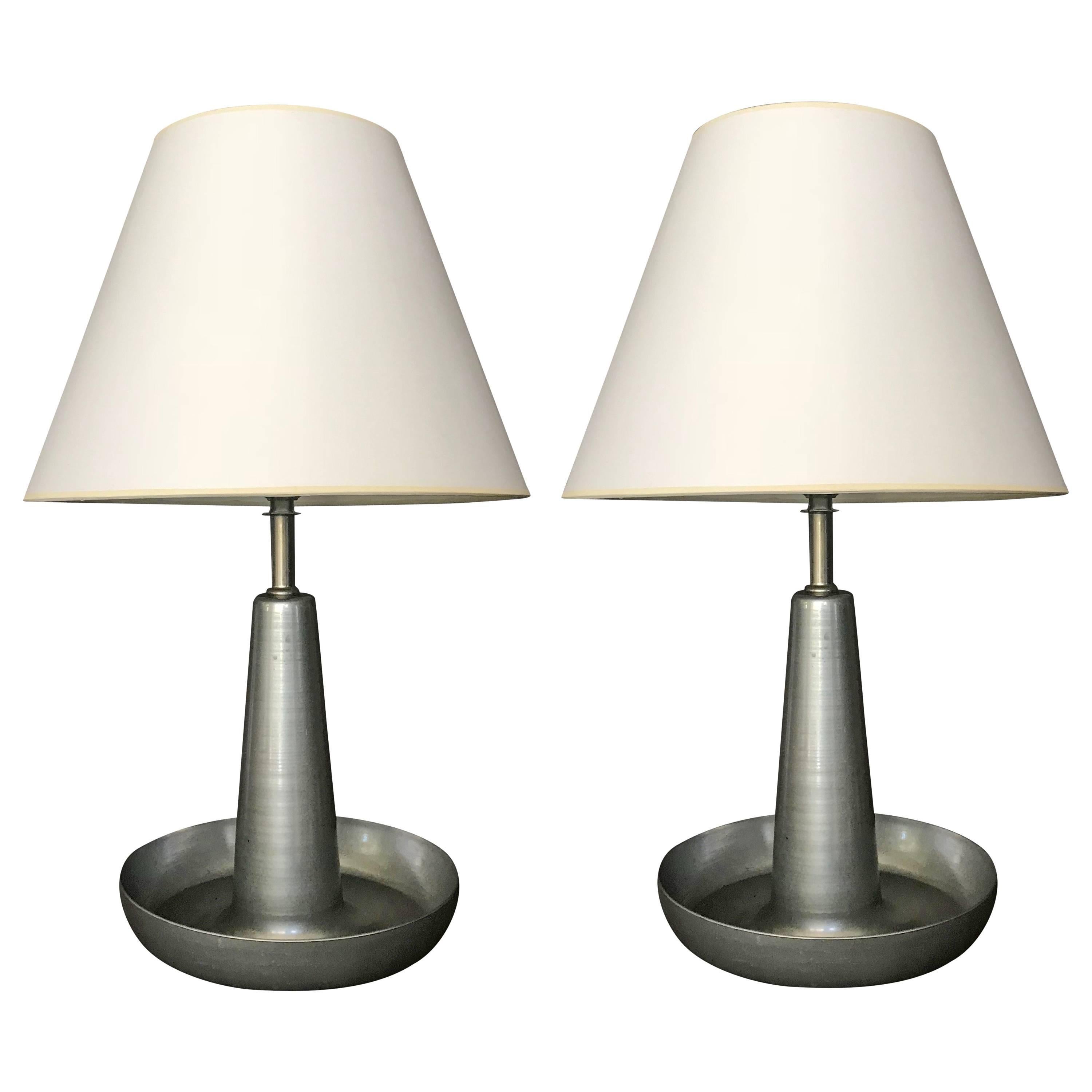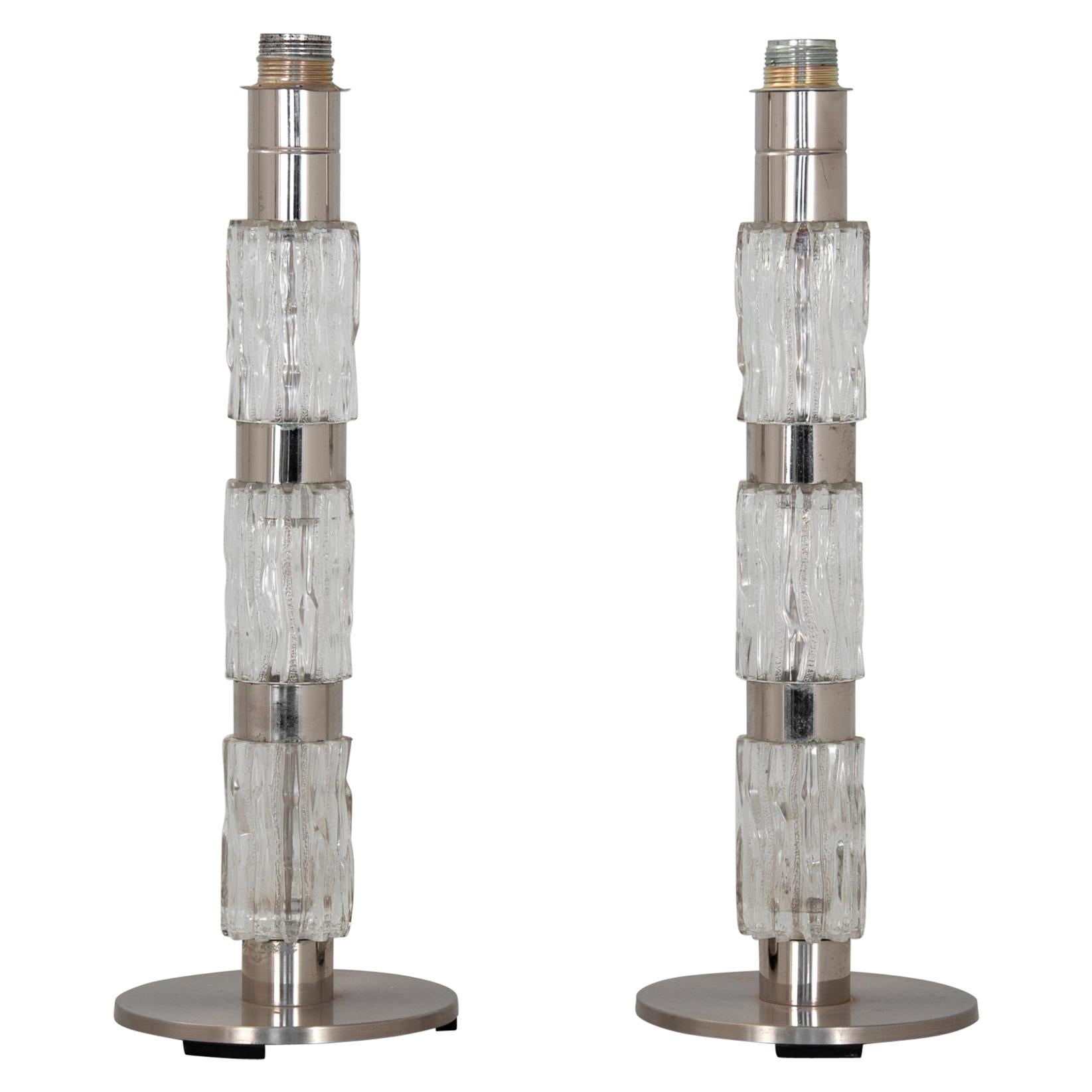Items Similar to Pair of XIXth century lamps
Want more images or videos?
Request additional images or videos from the seller
1 of 13
Pair of XIXth century lamps
About the Item
Exceptional pair of régule late XIX th century lamps standing on green marble bases. Signatures at the bottom.
Rests of polychromy for this pair figuring « les Amériques ».
Grear quality and condition. Rare!
- Dimensions:Height: 39.38 in (100 cm)Width: 16.93 in (43 cm)Depth: 16.93 in (43 cm)
- Materials and Techniques:
- Period:
- Date of Manufacture:1890
- Condition:
- Seller Location:Isle Sur Sorgue, FR
- Reference Number:1stDibs: LU6102239256322
About the Seller
5.0
Platinum Seller
These expertly vetted sellers are 1stDibs' most experienced sellers and are rated highest by our customers.
Established in 1950
1stDibs seller since 2021
63 sales on 1stDibs
Typical response time: 1 hour
- ShippingRetrieving quote...Ships From: Le thor, France
- Return PolicyA return for this item may be initiated within 14 days of delivery.
More From This SellerView All
- Pair of Bamboo and Rope Table LampsBy Adrien Audoux and Frida MinnetLocated in Isle Sur Sorgue, FRCute pair of handmade bamboo and rope table lamps give you soft and warm light. Simple and natural boho chic. In the style of Audoux & Minet in 1960s.Category
2010s French Mid-Century Modern Table Lamps
MaterialsBamboo, Wood, Rope
- Pair of rattan « palm tree/coconut tree » lampsLocated in Isle Sur Sorgue, FRLovely pair of rattan lamps with adjustable palms and lights in the coconuts. Very decorative, these lamps are a promise of holidays and sun. They...Category
21st Century and Contemporary Table Lamps
MaterialsRattan
- Pair of Table Lamps in Bone Marquetry and BrassLocated in Isle Sur Sorgue, FRPair of handmade bone marquetry and brass. Ready for you to match with any lamp shades.Category
21st Century and Contemporary European Mid-Century Modern Table Lamps
MaterialsBone
- Carrare marble lampLocated in Isle Sur Sorgue, FRExceptional Carrara marble lamp. Entirely made of marble, the base is carved and the lampshade is polished. Rare know how and in excellent condition!Category
21st Century and Contemporary Table Lamps
MaterialsMarble, Carrara Marble
- Rattan Coconut Tree / palm tree Table LampBy Mario Lopez TorresLocated in Isle Sur Sorgue, FRHandmade cute mini-version of rattan coconut lamp. Easy to fit on your table, sidebord or even bedside table. Each comes with 2 bulbs in the coconuts and 6 removable/ adjustable leav...Category
Late 20th Century European Mid-Century Modern Table Lamps
MaterialsRattan
- Pair of faux bamboo XIX th century armchairsLocated in Isle Sur Sorgue, FRExceptional pair of faux bamboo armchairs attributed to Perret Vibert circa 1900 Fabric « Au bon marché » not in perfect condition. Rare, great quality and condition.Category
Antique 1890s Armchairs
MaterialsWood
You May Also Like
- Pair of Porcelain Vases Ormolu-Mounted in Lamps by Gagneau Paris XIXth CenturyBy Gagneau ParisLocated in Saint-Ouen, FRPair of large Japanese Porcelain Cone Shape Vases with Imari decoration Important mounts in ormolu and gilded metal, the base decorated with a laurel wreath, the upper part of falling leaves and a frieze of knotted ribbon. The mounts signed Gagneau, 115 R. Lafayette. Circa 1860 With their original aluminium bulb cover and original gilding Vase it self Height 47 cm The Gagneau Company is one of the most famous lighting factories in Paris in the nine-teenth century, established in 1800 at 25 rue d'Enghien in Paris and later at 115 rue de Lafayette. She has participated in many exhibitions throughout this century. She began in 1819 with the Exposition des Produits de l'Industrie and later participated in the Universal Exhibitions where she was part of the jury in the category of art bronzes (class 25) at the Universal Exhibition in Paris in 1889. "Imari" was simply the trans-shipment port for Arita wares, from where they went to the for-eign trading outposts at Nagasaki. It was the kilns at Arita which formed the heart of the Japanese porcelain industry. Arita's kilns were set up in the 17th century, after kaolin was discovered in 1616. A popular legend attributes the discovery to an immigrant Korean potter, Yi Sam-Pyeong (1579–1655), although most historians consider this doubtful. After the discovery, some kilns began to produce revised Korean-style blue and white porcelains, known as Early Imari, or "Shoki-Imari". In the mid-17th century, there were also many Chinese refugees in northern Kyushu due to the turmoil in China, and it is said that one of them brought the overglaze enamel coloring technique to Arita. Thus Shoki-Imari developed into Ko-Kutani, Imari, and later Kakiemon, which are sometimes taken as a wider group of Imari wares. Ko-Kutani was produced around 1650 for both export and domestic market.Kutani Ware is characterized by vivid green, blue, purple, yellow and red colors in bold designs of landscapes and nature. Blue and white porcelain pieces continued to be produced and they are called Ai-Kutani. Ko-Kutani Imari for the export market usually adopted Chinese design structure such as kraak style, whereas Ai-Kutani for the domestic market were highly unique in design and are ac-cordingly valued very much among collectors. Ko-Kutani style evolved into Kakiemon-style Imari, which was produced for about 50 years around 1700. Kakiemon was characterized by crisp lines, and bright blue, red and green designs of dramatically stylized floral and bird scenes. Imari achieved its technical and aes-thetic peak in the Kakiemon style, and it dominated the European market. Blue and white Kakiemon is called Ai-Kakiemon. The Kakiemon style transformed into Kinrande in the 18th century, using underglaze blue and overglaze red and gold enamels, and later additional colors. Imari began to be exported to Europe when the Chinese kilns at Jingdezhen were damaged in the political chaos and the new Qing dynasty government halted trade in 1656–1684. Ex-ports to Europe were made through the Dutch East India Company, and in Europe the des-ignation "Imari porcelain" connotes Arita wares of mostly Kinrande Imari. Export of Imari to Europe stopped in mid-18th century when China resumed export to Europe, since Imari was not able to compete against Chinese products due to high labor costs. By that time, however, both Imari and Kakiemon styles were already so popular among Eu-ropeans that the Chinese export porcelain copied both, a type known as Chinese Imari. At the same time, European kilns, such as Meissen and English potteries such as Johnson Bros. and (Royal) Crown Derby, also imitated the Imari and Kakiemon styles. Export of Imari surged again in late 19th century (Meiji era) when Japonism flourished in Europe.Thus, in the western world today, two kinds of true Japanese Imari can...Category
Antique 1880s French Japonisme Table Lamps
MaterialsBronze
- Candelabra In Porcelain And Bronze, Japonisme, XIXth CenturyLocated in MARSEILLE, FRPorcelain candelabra painted with flower decoration, with a base and a bouquet of 7 lights, in bronze with a brown patina, in the Japanese or Escalier de Cristal style Good general ...Category
Antique 19th Century French Napoleon III Table Lamps
MaterialsBronze
- Mid Century Pair of Chrome LampsLocated in Ballard, CARare pair of chrome Art-Deco or mid-century table lamp, with disc of frosted glass, in great order and functioning comes with 5 ft of cord. the pair of a leaded base, This would be ...Category
Mid-20th Century French Art Deco Table Lamps
MaterialsChrome
- Pair of Mid-Century Aluminum LampsLocated in New York, NYPair of mid-century aluminum lamps. Pair sleek, quiet modern lamps in aluminum newly rewired with black silk cords and switches. American, late 1960s lampshades are optional and not ...Category
Vintage 1960s American Mid-Century Modern Table Lamps
MaterialsAluminum
- Pair of Mid-Century Table LampBy Kamenicky SenovLocated in Vienna, ATSteel painted with fitted with an E14 socket, made by Kamenicky Senov in the 1960s.Category
Vintage 1960s Austrian Mid-Century Modern Table Lamps
MaterialsSteel
- Pair of Mid-Century Modern LampsLocated in South Salem, NYPair of 1960s Italian Lucite column side or table lamps with modern reflective shades. Made of Lucite and chrome these have been rewired for the US.Category
Vintage 1970s Italian Table Lamps
MaterialsLucite




